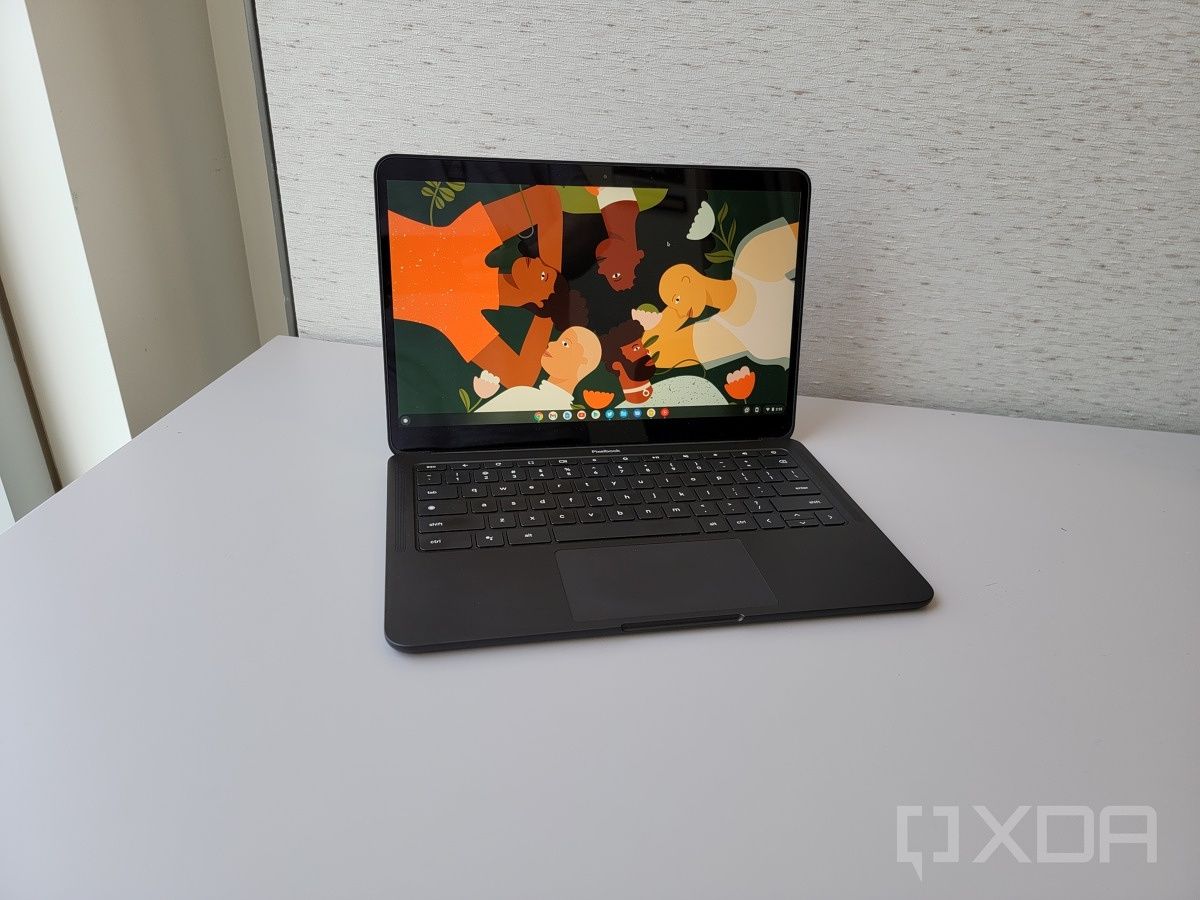Google launched the Pixelbook Go nearly two years ago, in October 2019. At the time, it made quite a splash in the Chrome OS world and was one of the best Chromebooks available. Most Google products tend to do that, but the Pixelbook Go is different in many respects. Not only does it have the typical Google design aesthetic, it also comes in a number of configurations that appeal to a variety of users. As with past Google Chromebooks, the Pixelbook Go also launched with an expensive price tag to boot. However, considering the specs and experience on offer, the general consensus at launch was that Google had a hit with the Pixelbook Go.
Fast forward to today, the Pixelbook Go is still the newest Chromebook made by Google. Sure, there are plenty of newer Chromebooks out there from other OEMs. But if you want a Google experience on Chrome OS, you're looking at the Pixelbook Go. That begs the question -- is the Pixelbook Go still worth it in 2021? I've been using the Pixelbook Go daily over the past few years. In this Pixelbook Go long term review, I'll discuss how all aspects of this Chromebook hold up today.
| Specification |
Google Pixelbook Go |
| Dimensions & Weight |
- 12.2" x 8.1" x 0.5"
- 2.3 lbs
|
| Display |
- 13.3" LCD touchscreen display
- Full HD 1920x1080 (166ppi) or 4K (331 ppi), 4K on i7 model only
- 16:9 aspect ratio
- 72% NTSC color
|
| Processor |
- 8th Gen Intel Core m3, i5, or i7 processor
|
| RAM & Storage |
- 8GB or 16GB RAM
- 64, 128 or 256 GB SSD storage
|
| Battery & Charging |
- Full HD: 47 Wh battery
- 4K Ultra HD Molecular Display™: 56 Wh battery
- Up to 12 hour of usage.
- 45W charger included.
|
| Security |
- Titan C Security Chip
- Built-in FIDO authenticator
|
| Front camera |
- Duo Cam
- 2 megapixel, ƒ/2.0 aperture, 1.4μm pixel size
- Video Recording: 1080p HD at 60fps
|
| World-facing camera |
|
| Port(s) |
- USB-C charging and display output (2)
- 3.5mm headphone jack
|
| Audio |
- Dual front-firing speakers for better surround sound
- 2 mics for improved noise cancellation
|
| Connectivity |
- Wi-Fi: 802.11 a/b/g/n/ac, 2x2 (MIMO), dual-band (2.4 GHz, 5.0 GHz)
- Bluetooth 4.2
|
| Software |
Chrome OS |
| Other Features |
- Backlit keyboard
- Jumbo trackpad
- Ambient light and magnetic sensors
|
About this review: Google gifted me the Core i5/8GB RAM/128GB storage model of the Pixelbook Go at launch, as part of their Team Pixel influencer program. I've been using that device for the past 22 months. Google didn't have any input in this review.
Pixelbook Go: Design, build, and durability
The simple and understated design of the Pixelbook Go is really timeless, so it's no surprise it still looks great today. In fact, there aren't many Chromebook OEMs that come close to matching Google's design aesthetic in my opinion. My 'Just Black' model of the Pixelbook Go still looks absolutely gorgeous after two years of use. I tend to be fairly careful with my tech, but I've definitely given this Chromebook a few bumps and at least one short drop onto the carpet in my office.
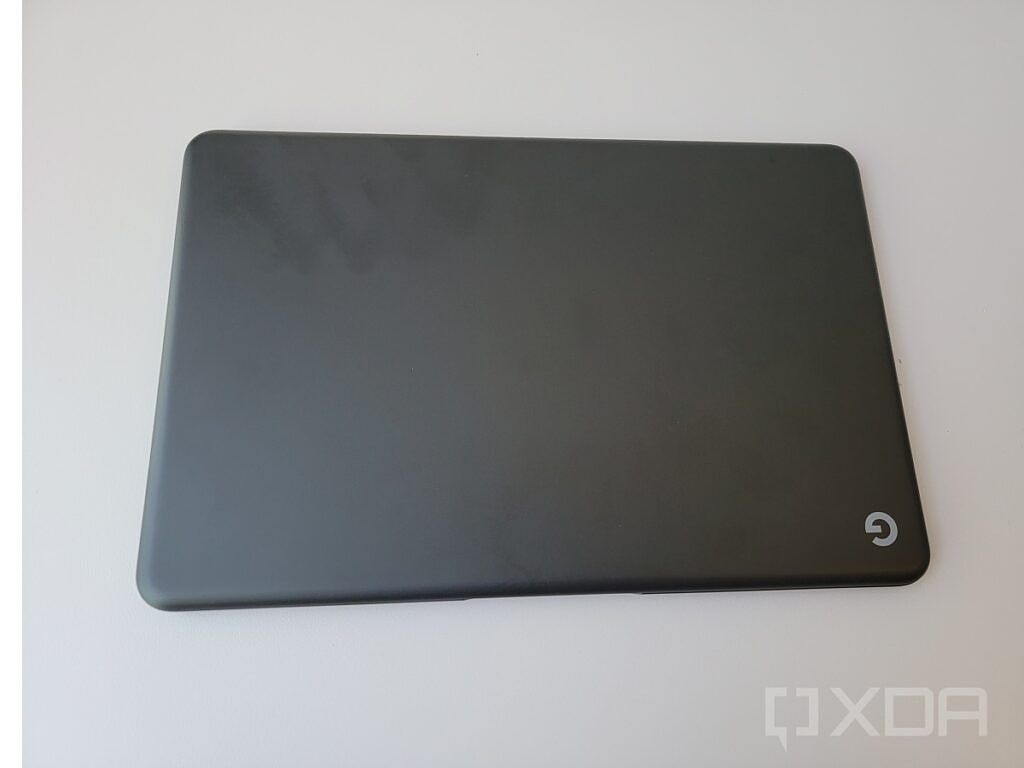
A nicely rounded chassis with clean lines and a simple 'G' logo in the corner makes this a very appealing laptop. The textured bottom also provides an easier grip if you want to carry around the Pixelbook Go without a case or sleeve. In addition, this is one of the lightest 13" Chromebooks out there, making it very portable for travel.
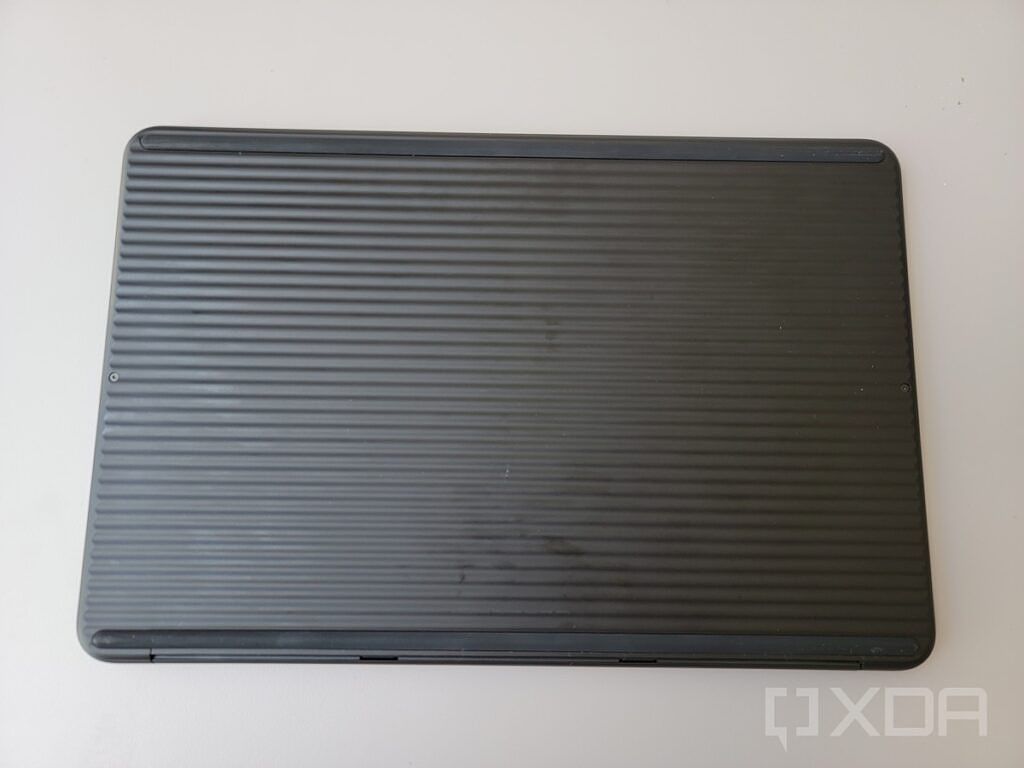
The magnesium alloy frame is incredibly rigid and has very little flex even after two years of continued use. I can pick up the Pixelbook Go by any corner and not worry about creaking from the chassis. In terms of durability, the Pixelbook Go has held up admirably to the test of time.
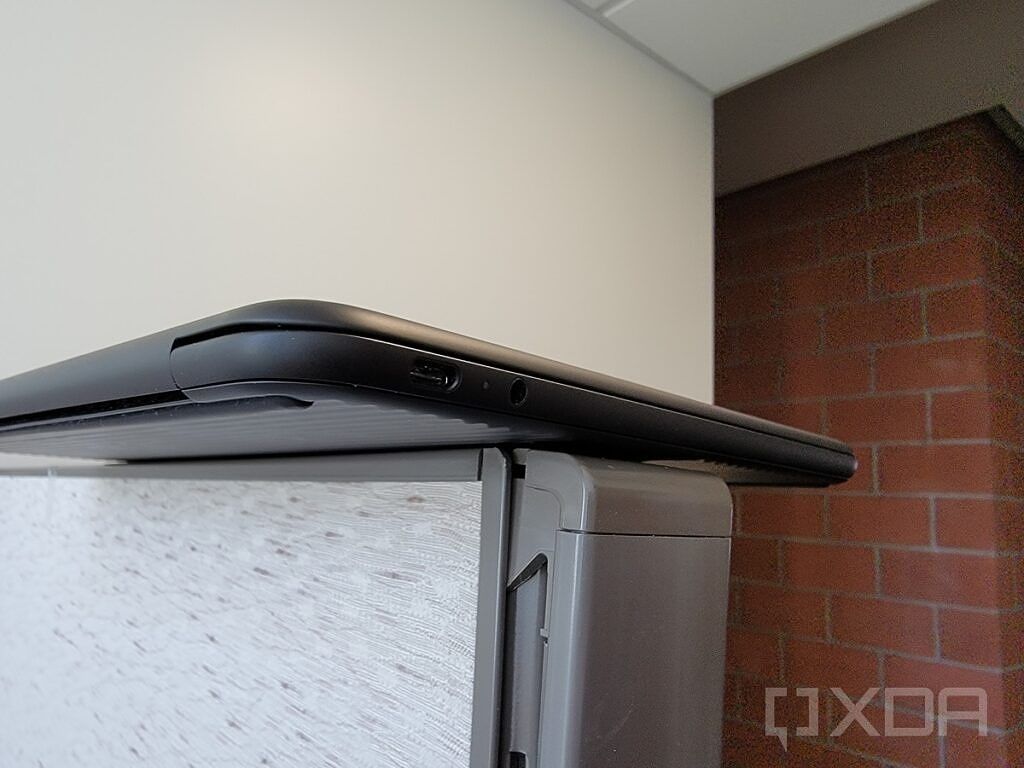
Thinking back on my time with this Chromebook, I only have one chief complaint about the design. I really wish Google included a fingerprint scanner. Actually, any type of biometric security would be just fine with me. Over the past few years, high-end Chromebooks increasingly feature biometric security options at this high price point. While not a deal-breaker, I hope Google will add biometric security options to their next flagship Chromebook release.
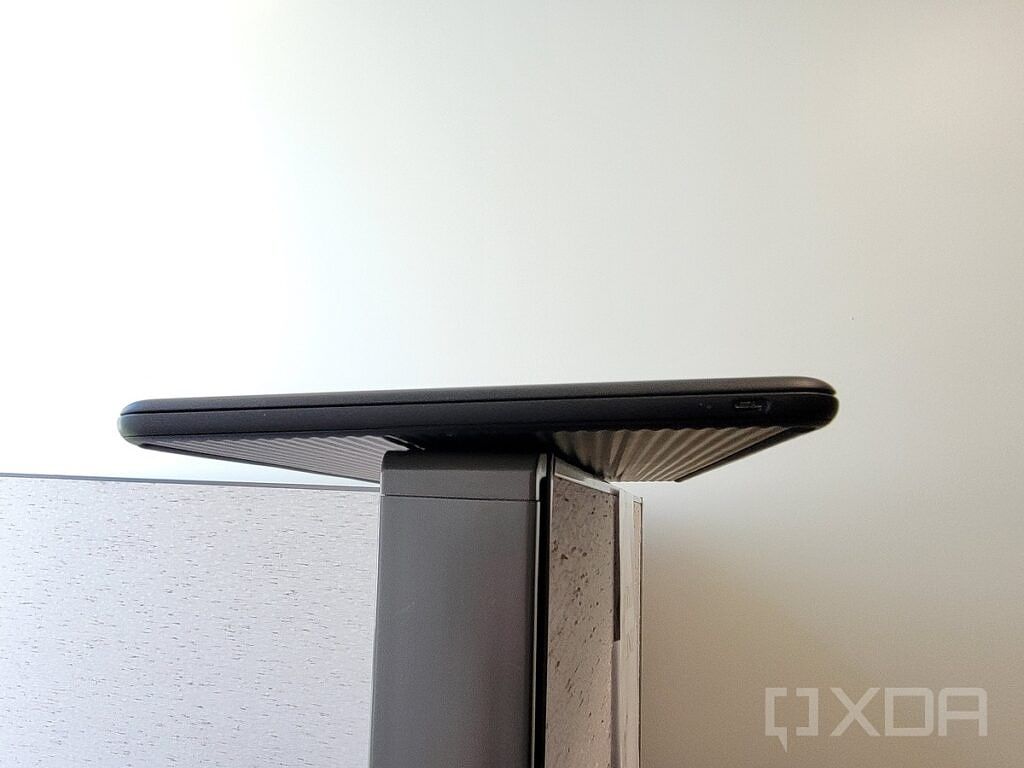
Pixelbook Go: Keyboard and touchpad
If you pull up any initial review of the Pixelbook Go, you'll likely find the author raving about the keyboard and touchpad quality. I'm happy to report that both of these elements have stood the test of time as well.
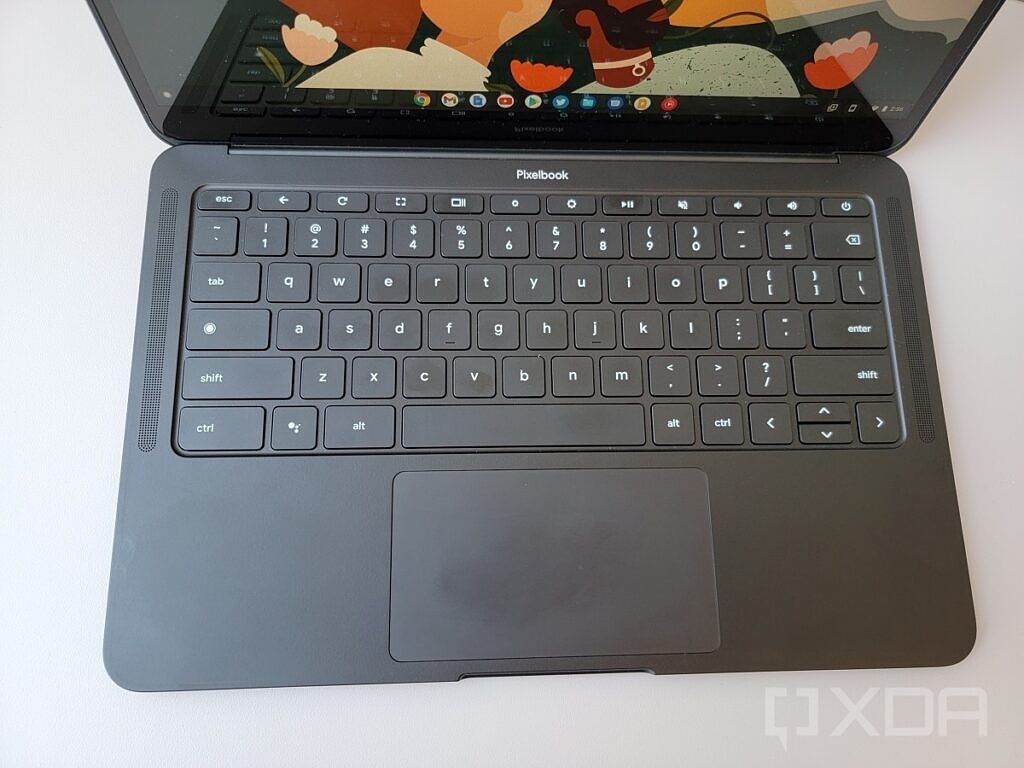
The Pixelbook Go keyboard is truly one of the best keyboards on any laptop. It offers a startling combination of quiet keys, nice feedback, and key travel. Considering this is a 13" Chromebook, the keyboard is also incredibly well spaced for maximum typing comfort. When I switch between the Pixelbook Go and my Macbook Pro I always long to go back to typing on the Pixelbook.
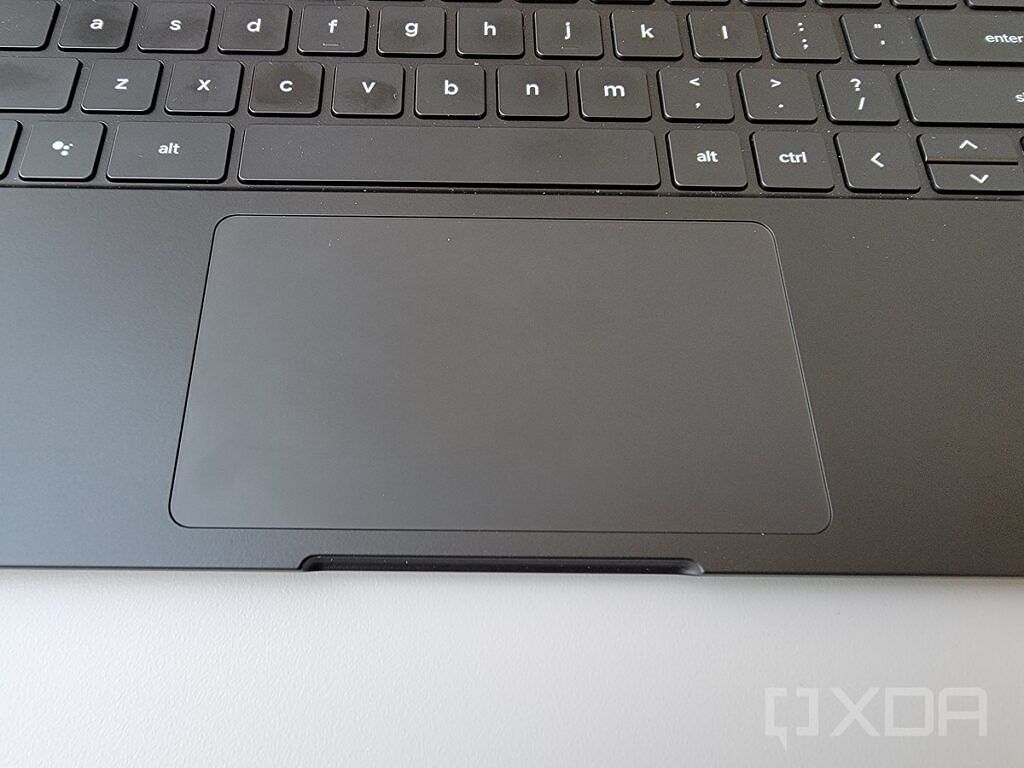
Over time, the keys have got a bit worn, which has led to a little less travel. This isn't a huge issue however and I still consider the Pixelbook Go to have one of the best Chromebook keyboards out there. The only annoying thing about the keyboard is the lack of a dedicated backlight toggle. Using keyboard shortcuts to adjust backlighting isn't very intuitive, something Google should also consider revamping with their next Chromebook.
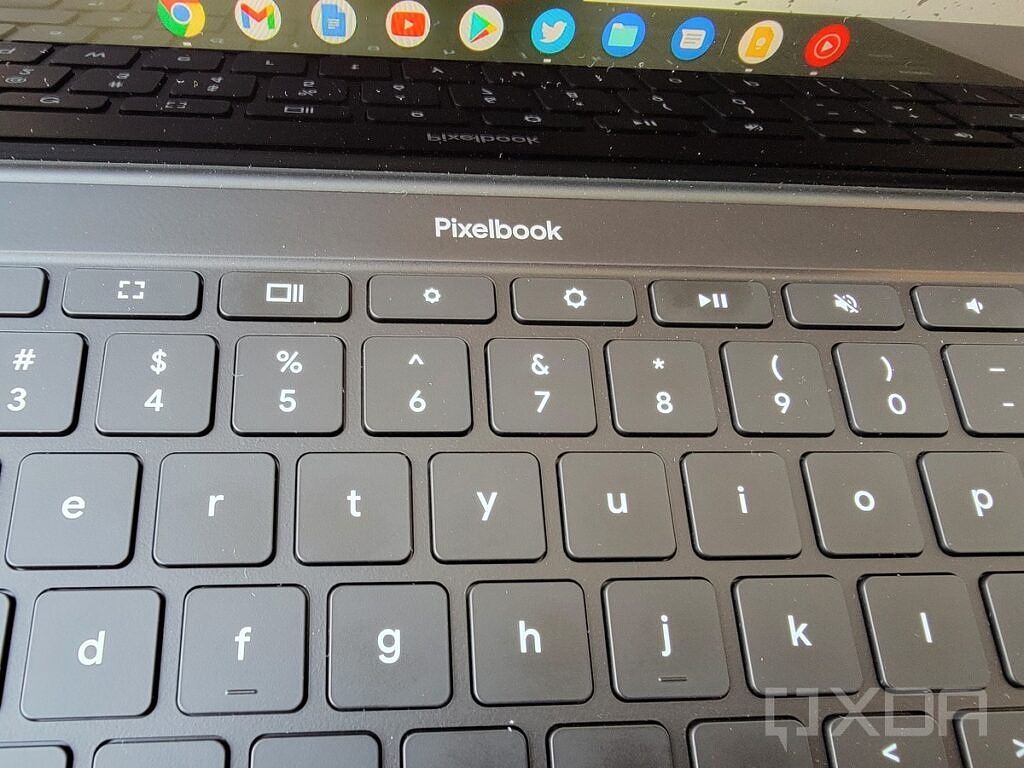
As for the touchpad, it's as good as new. There's some noticeable wear around the trackpad where I sit my wrist, but that happens on just about any laptop and isn't that bothersome. The large target area and impressive tactile click of this touchpad are incredibly satisfying. It's nearly impossible to find a better overall keyboard/touchpad combo on a Chromebook today. This impressive combo makes the Pixelbook Go a great
Chromebook for students.
Pixelbook Go: Display, webcam, and audio
There are two different display options on the Pixelbook Go. My personal unit features an FHD panel at 166 ppi. There's also a 4K display available on the Core i7 model of the Pixelbook Go. I can't comment on the 4K model, but my 1080p panel still performs quite well today. I do have a few gripes about it though, mainly when it comes to brightness and the 16:9 aspect ratio.
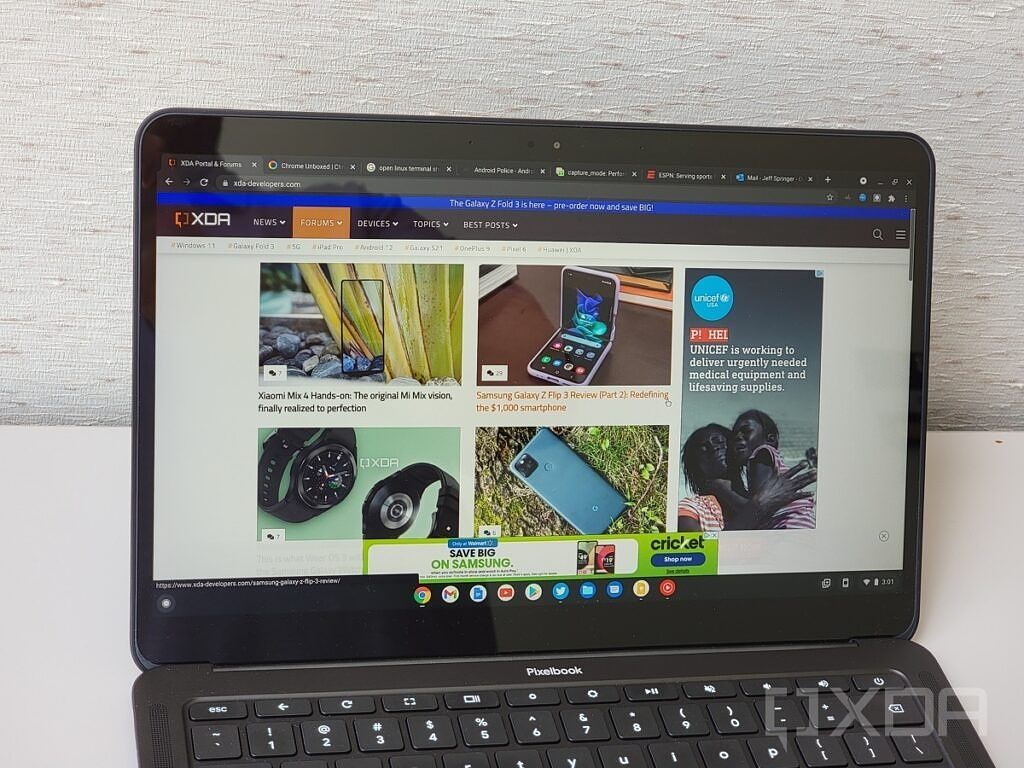
While the Pixelbook Go display produces accurate and vibrant colors, it's a bit dimmer than high-end Chromebooks released in 2021. When compared to my ASUS Chromebook CX9 and Samsung Galaxy Chromebook 2, the Pixelbook Go display is very difficult to view in direct sunlight. Indoors, the situation is fine, but this is definitely an area Google can improve upon.

The 16:9 aspect ratio isn't a problem for everyone, but it does make productivity a bit more challenging. I always prefer a 16:10 or even 3:2 aspect ratio for writing, just to get more vertical space for documents. Obviously, some users will prefer 16:9 if they use the Pixelbook Go primarily for media consumption. It would be nice to see Google offer both a 16:9 and 3:2 flagship Chromebook at some point, but that seems unlikely in the near future.
Typically, I don't single out the webcam in a review, but the Pixelbook Go deserves it. Over the past 18 months, everyone started using their webcam a lot more. Most Chromebooks feature fairly pedestrian 720p webcams with very little consideration from the OEM. That's not the case here, as the Pixelbook Go features a 1080p webcam that can shoot video at 60fps. The fact Google included this even before the pandemic started, makes the Pixelbook Go an even more compelling Chromebook despite its old age.
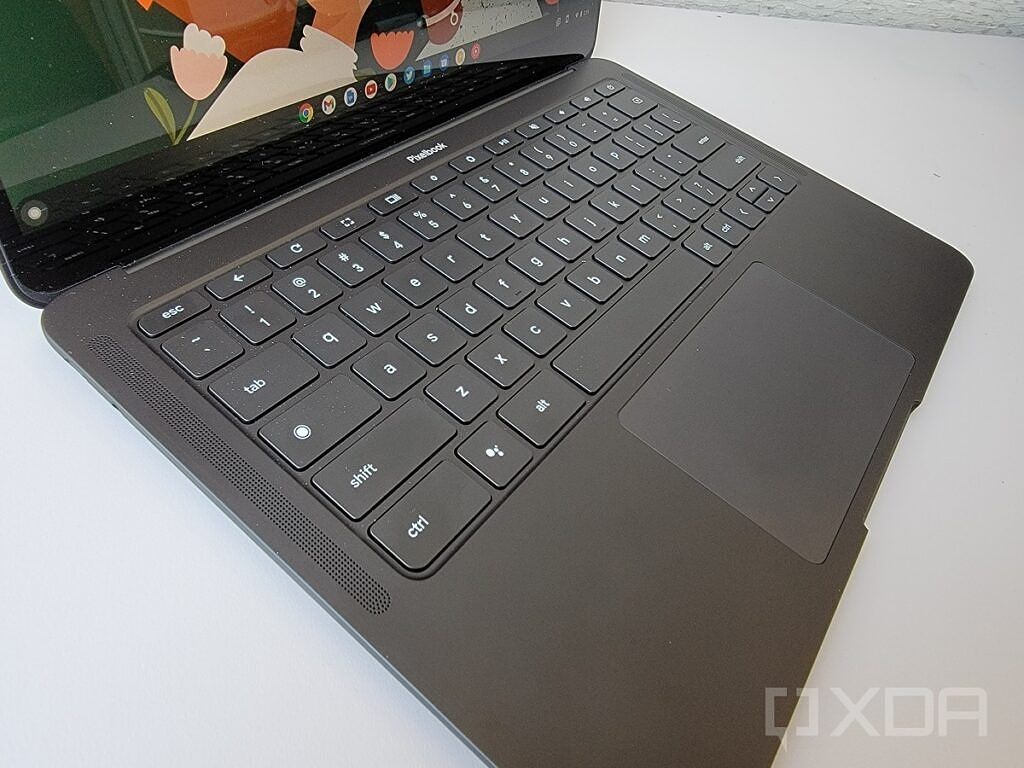
Audio is another area where the Pixelbook Go blows away the competition. Most smaller Chromebooks feature bottom-firing speakers that don't get very loud and have trouble filling a room. Meanwhile, the Pixelbook Go has dual front-firing speakers that get in your face and pump out a decent amount of bass. Even two years later, the Pixelbook Go features the absolute best set of speakers in a Chromebook.
Pixelbook Go: Performance and battery life
When a laptop is a few years old, performance and battery life are where you'd expect to see the biggest dings. With the light nature of Chrome OS, performance on the Pixelbook Go doesn't take much of a hit. My Core i5 model still chugs along and handles pretty much everything I throw at it currently. I can still multitask with ease and even play some high-end Android games like Asphalt 9 without many hiccups.
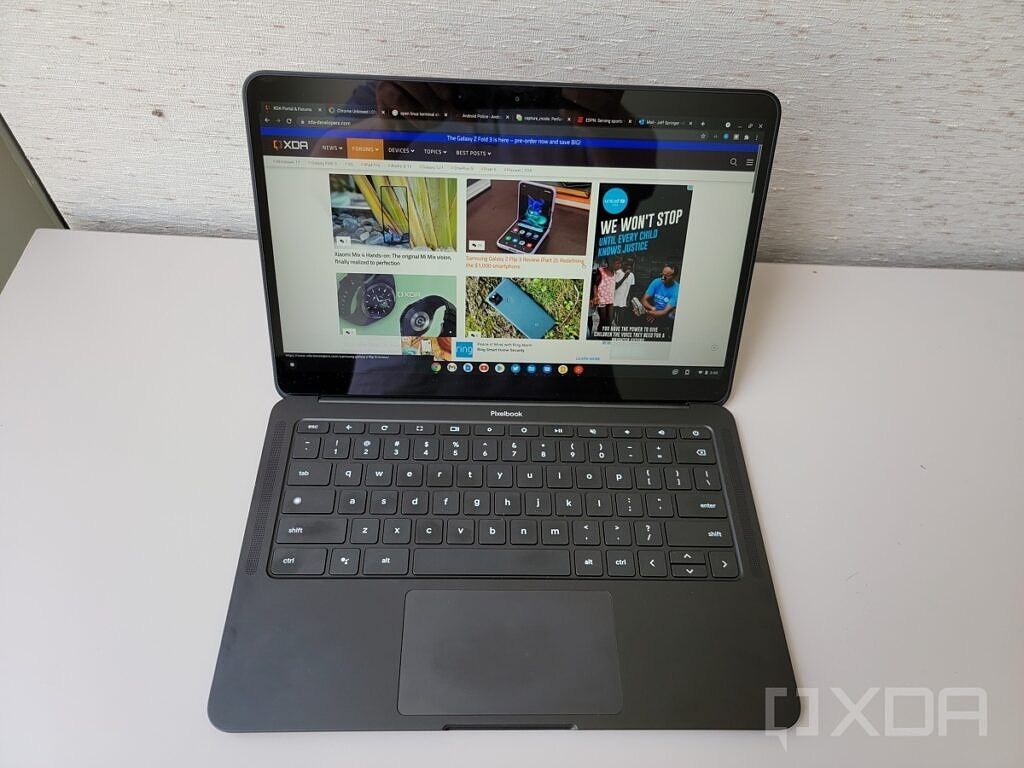
Of course, looking toward the future is a different story. The 8th-gen Intel processors on the Pixelbook Go will not be equipped to handle the gaming revolution coming to Chrome OS with Borealis. If you're really excited about Steam gaming arriving on Chrome OS later this year, the Pixelbook Go would not be the best Chromebook to invest in at this point. Instead, check out the
ASUS Chromebook CX9 I recently reviewed.
One other persistent performance issue I noticed is a fairly audible coil whine coming from the middle of the laptop. Coil whine is a high-pitched noise caused by electromagnetic coils that act as inductors or transformers. My Pixelbook Go unit suffered from the phenomenon throughout my usage, but it doesn't bother me too much as I often listen to music while working. On the plus side, the processor used on the Pixelbook Go is fanless, so you won't deal with any fan noise.
Battery life of course degraded some over time, as you'd expect. I was able to get around 8 hours of comfortable work usage out of the Pixelbook Go when I first unboxed it in October 2019. These days, I can squeeze out around 6.5 hours of use before I need to top up. This isn't a terrible decrease in capacity and not something I hold against the Pixelbook Go as all batteries suffer this fate.
Conclusion
Should you buy a Pixelbook Go in 2021? Well, that really depends on your intended use case. Those looking for a well-built generally capable Chromebook with an amazing keyboard, touchpad, and speakers should absolutely consider the Pixelbook Go. You can still find sales for the
Pixelbook Go at Best Buy or even occasionally from Google themselves.
On the other hand, if you're anxiously awaiting the arrival of Borealis and Steam gaming on Chrome OS, you should probably look for a newer device. The Pixelbook Go has fairly old Intel processors inside and doesn't feature improved graphics like the ASUS Chromebook CX9.
Overall, I'm impressed with how the Pixelbook Go compares to newer Chromebooks today. I can't wait to see Google's next Chromebook project -- hurry up Mountain View!
Google Pixelbook Go
Google’s Pixelbook Go has stood the test of time. This is still the best Chromebook out there for long typing sessions and quality speakers.
Affiliate Links
- Amazon
- View at Amazon

